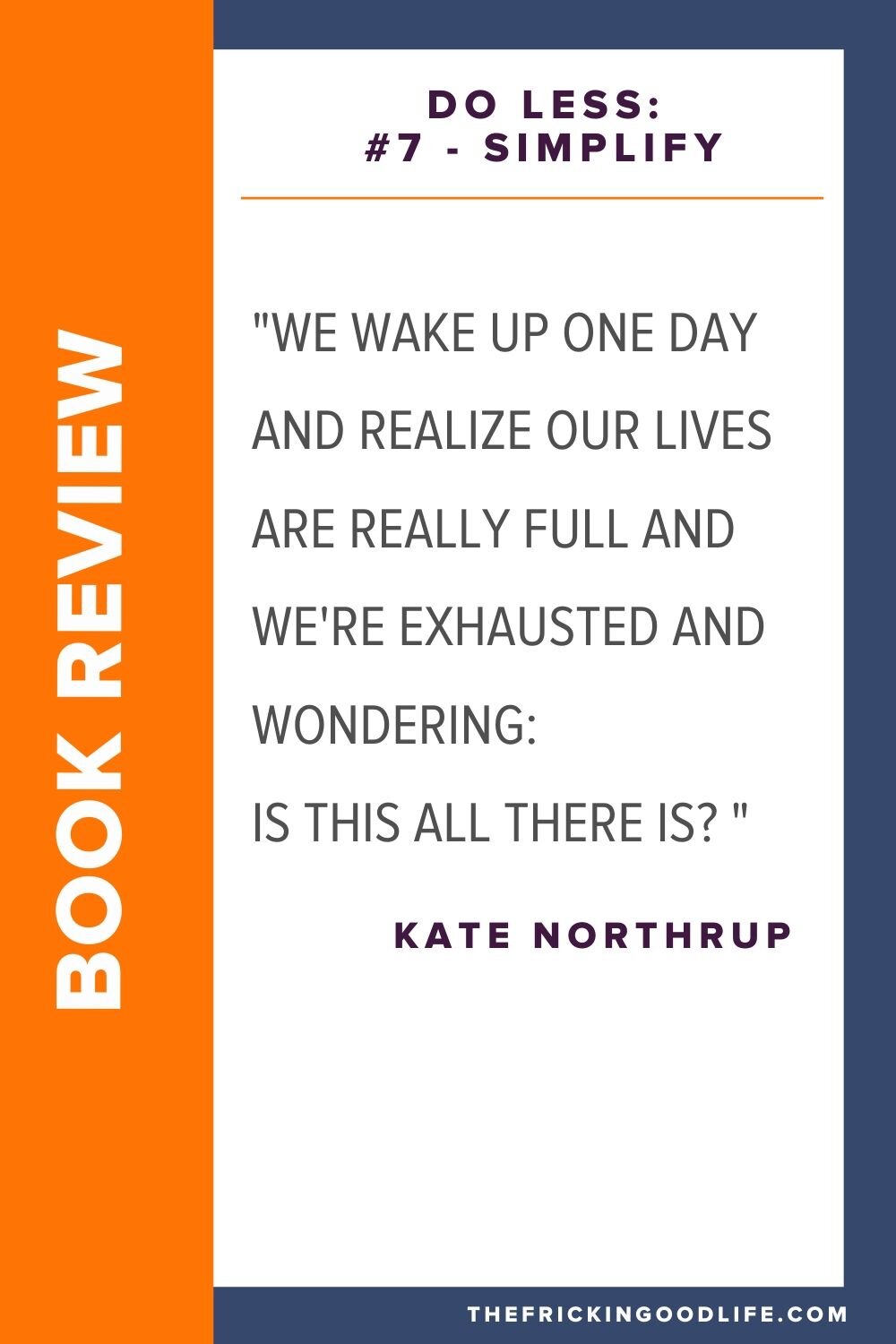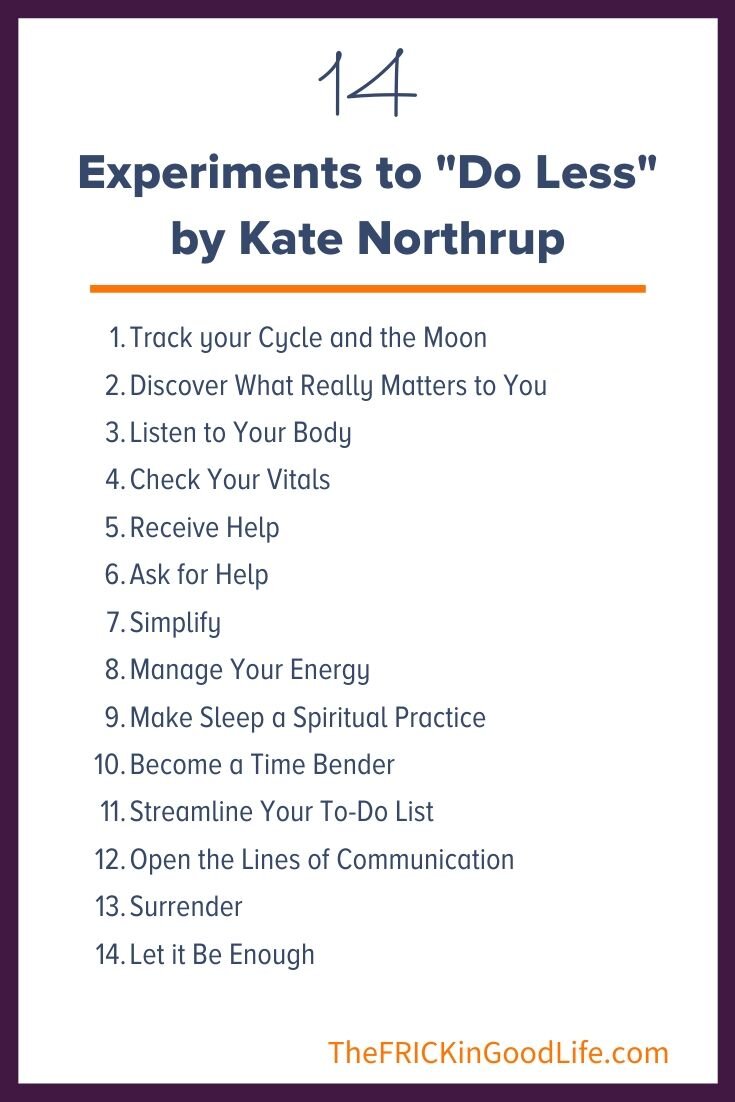Book Review: Do Less
/Do less.
What’s the first thing that comes to your mind when you hear those words? That sounds lovely? That’s impossible? I already don’t do much? Or… do you laugh out loud because it seems like an insane phrase that someone in a galaxy far, far away made up?
When I originally purchased this book, I had all of those feels. Then I put it on my bookshelf, and didn’t open it for, several months. Only after I had made myself the sickest I’ve been for a very long time by trying to do too much… all while five months pregnant.
So in January of 2020 as I was looking at my bookshelf trying to decide which of the many books I have acquired that I was going to read first, the subtitle of this book caught my attention.
“A Revolutionary Approach to Time and Energy Management for busy Moms”
No, I wasn’t technically a mom yet, but I knew that it was coming. And really, what could be so revolutionary about this technique? And what was it that caused me to buy the book in the first place (because honestly, I couldn’t remember. I remembered later as I was reading the book, but that’s a different story.)?
All I knew was that I was exhausted, broken down, pregnant, and overwhelmed.
So I started reading.
I was so exhausted, in fact, that when I started reading the book I could only make it through a few pages at a time before I started to drift off to sleep. (So much for reading.) Then Rob and I signed up for a Birthing class and had “assigned reading,” so I set the book aside as I read the books for class. To be honest, I wondered if I would ever get back to the book. Especially since there’s something about a book titled “Do Less” that doesn’t exactly inspire you to pick it up when you’re totally exhausted.
Then Covid-19 happened and my gyms closed three weeks before I had even thought about starting my maternity leave.
So after a week or so of avoidance, I picked up the book again, if for nothing else, so I would be able to write this review for you.
It’s funny, because I’m not exactly sure when the appropriate time to actually share this review with you would be. Maybe you are doing less already. Or maybe you’re doing more. Either way, here we are, several months after I started the book and planned to bring you a review. But if there’s one thing 2020 has taught me is that you can plan all you want, what will happen will happen.
So, without further ado…
Do Less by Kate Northrup
I originally purchased this book after hearing Kate Northrup interviewed on a podcast. She was talking about energy, how our energy patterns are cyclical, and therefore how it was impossible to be at full-throttle all the time.
It was a message I desperately needed at the time because I was currently navigating huge changes in my business and had just found out there were more to come. I had recently found out I was pregnant and I knew things in my life were going to have to change.
I skimmed a couple of reviews before I purchased the book and many of them said things like “this book is unrealistic” or “Northrup is entitled, and this wouldn’t work for a normal person.” I decided to give the book a try anyway. I’m pretty good at taking the pieces that work for me and leaving the rest, and if nothing else, I figured the chapter where she talked about energy cycling would be intriguing.
After reading the book, I can see why those reviewers felt the way they felt. The book requires most of its readers to go through a massive mind-set shift. It would be easy to pass much of what she says off as completely entitled and unrealistic. But I disagree. That being said, I’ve spent years working on my own mind-set shift when it comes to several of the things Northrup recommends in this book.
First off, getting help. Through both my personal and professional life I’ve realized that help is something many women struggle with. We struggle with asking for help as well as receiving help. Heck, I’ve been “working on this” for years and I still struggle with it. The negative reviews I read focused on the fact that not everyone would be able to pay for help, but Northrup acknowledges this fact in her book. She even gives ideas about how to barter for help, or (gasp) get it for free. No, not every idea will work for everyone, but if you approach the book with an open mind the ideas that are laid out can help you start your own brainstorm to figure out what may work for you.
Another aspect of this book that may or may not resonate with you is the “woo” factor. She talks about how feminine energy cycles align with the moon and our menstrual cycles. Later in the book, she dives even more into talk about the “cosmos” and the Universe. For some people, this just may be too much “woo.” However, if you’re able to take the woo factor out of the equation it makes sense to me that our energy is cyclical. Whether or not our energy has anything to do with the moon, the stars, or our bleeding patterns doesn’t much matter to me. Keeping track of my energy from day-to-day to see if there are patterns that occur does make sense.
Before I was pregnant I was tracking my cycle closely and I had noticed that energy patterns were emerging. So, before you throw the entire idea out the window, give tracking a try. You may find patterns, you may not. Either way you’ll have useful information you can use in the future.
Additionally, there is another aspect of this book that I think is important to point out. If you’ve done any work in time management at all, some of the things she talks about may seem familiar. You may have tried them before, or it may be something that you’ve started to do (or thought about doing) on your own. In fact, in part of the chapter “Streamline Your To-Do List” Northrup suggests doing something that I’ve been experimenting with on my own. (I don’t recall having read this suggestion anywhere else, but it’s completely possible.) If I’m already doing something similar, is it a waste of time to read about it in a book? I don’t think so. Reading something in black and white that we “already know” can not only pull our knowledge from the back of our mind, but also validate that we’re on the right path.
Overall, I’m glad I read the book. While I may not follow her exact methods, there were several parts that got me thinking about ways that I could do my own experiments to help me ‘Do Less’.
Northrup never claims that every idea in her book will work for everyone. In fact, she specifically states, “There is no one set of rules that will work for every person in every situation.” After all, half of the books chapters are labeled “experiments.” As in, try this out and see if it works for you. If it doesn’t, try something else. If you take the book as “the way” to do things, this book isn’t going to work for you. However, if you keep in mind that her ideas are suggestions of things to try and tweak to make your own, you may be surprised at how you can come up with ways that you can, in fact, do less.
As for me? I’ve already started experimenting.



